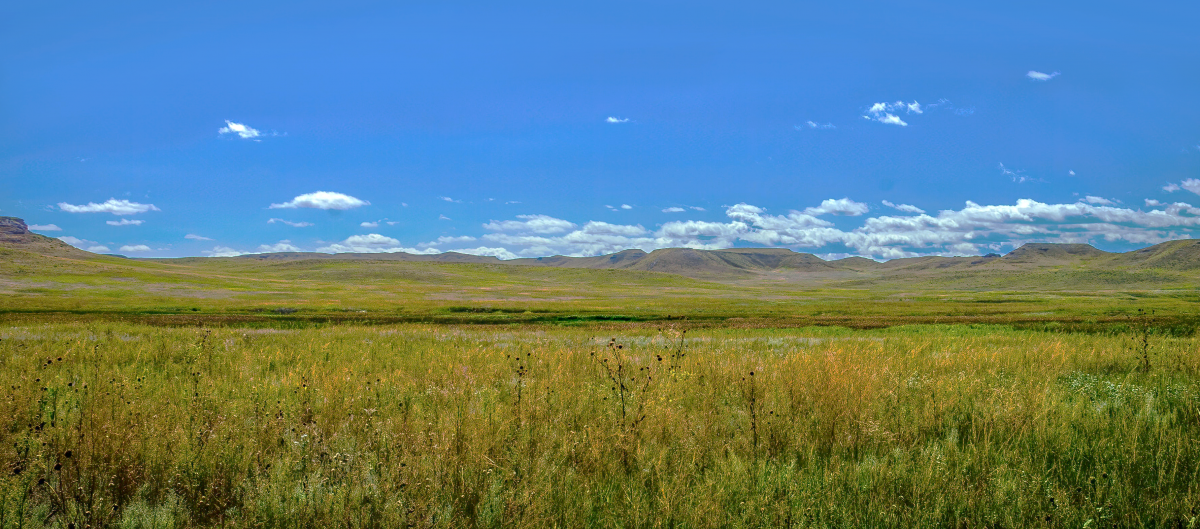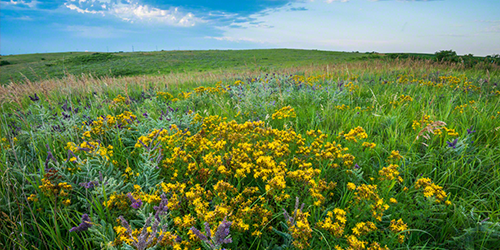Prairie Ecology & Management

NINE-MILE PRAIRIE
Three hundred and ninety-two vascular plant species and over 80 species of birds have been observed on the prairie. Notable species include the federally-threatened prairie white fringed orchid (Platanthera praeclara) and the rare regal fritillary butterfly (Speyeria idalia). The prairie is also used as a seed source of local genotypes of grasses and wildflowers for use in prairie restoration efforts in the region. The Nine-Mile Prairie Management Committee, comprised of University of Nebraska–Lincoln faculty from several different departments plus resource people from several agencies and organizations, is charged with the stewardship of this biological treasure. Management consists of springtime burning on a 3-year fire-return interval, along with periodic haying and weed/brush control using herbicides. The prairie has not been grazed since 1968.

The Prairie Corridor Project
The Prairie Corridor on Haines Branch is a tallgrass prairie passage and trail that will build on our nationally recognized trail and greenway system and will link two of Lincoln and Lancaster County’s premier environmental resource and education centers. It will follow the Haines Branch of Salt Creek from the Pioneers Park Nature Center, to the Conestoga Lake State Recreation Area, extend down through the Village of Denton and on to the Spring Creek Prairie Audubon Center. The Corridor will support economic development, build on Lincoln’s nationally recognized trail system, support environmental education and promote the enhancement and preservation of one of Nebraska’s most valuable resources–tallgrass prairie.

Glacier Creek Preserve
Glacier Creek Preserve is a 525 acre preserve situated northwest of Omaha in the rolling hills of eastern Nebraska. Embedded within the Preserve is the 140 acres Allwine Prairie Tract, a restored tallgrass prairie created in 1970. Large enough to sustain a diversity of functioning plant and animal communities, Glacier Creek Preserve incorporates an entire sub-watershed. The objective of Glacier Creek Preserve is to maintain an ecologically sustainable, landscape-level wildlife preserve focusing on tallgrass prairie and related ecosystems that will serve present and future generations both as a site for environmental education and as an important community resource for the appreciation of our historic prairie environment.

Tallgrass Prairie Center
The Tallgrass Prairie Center was established at the University of Northern Iowa (UNI) in 1999 as the Native Roadside Vegetation Center, founded by Dr. Daryl Smith, a member of the UNI biology department. Dr. Laura Jackson became director in 2013. It is located on the UNI west campus and includes staff and student offices, a 40-seat classroom and meeting space, a research lab, fully equipped seed cleaning labs, a long-term seed storage room, a large shop and equipment storage space, tractor, native seed drills, research plot combine, prescribed fire equipment, an 1800-square foot greenhouse, 65 acres of campus for native seed production nurseries, and a separate storage garage for additional large implements.